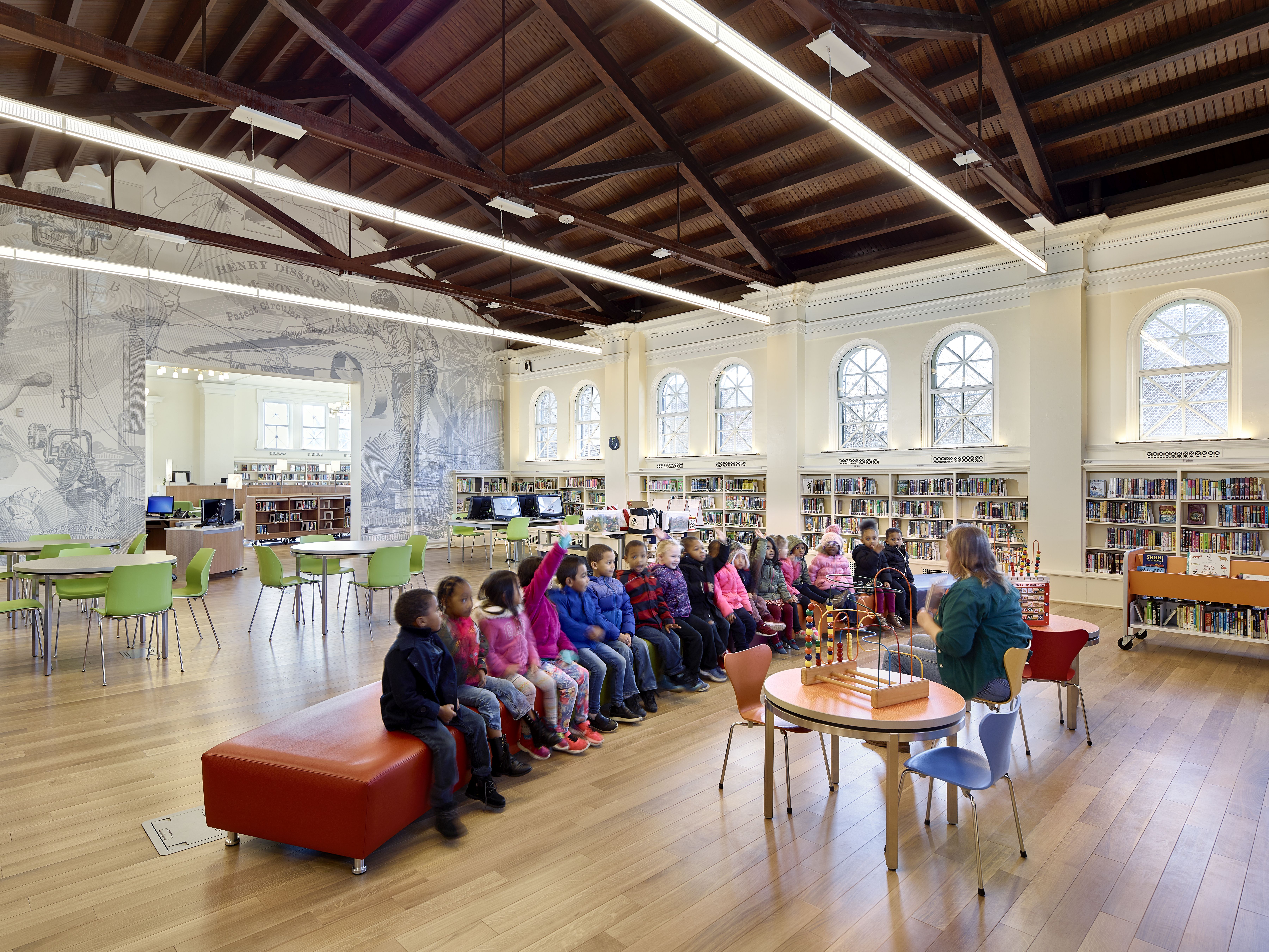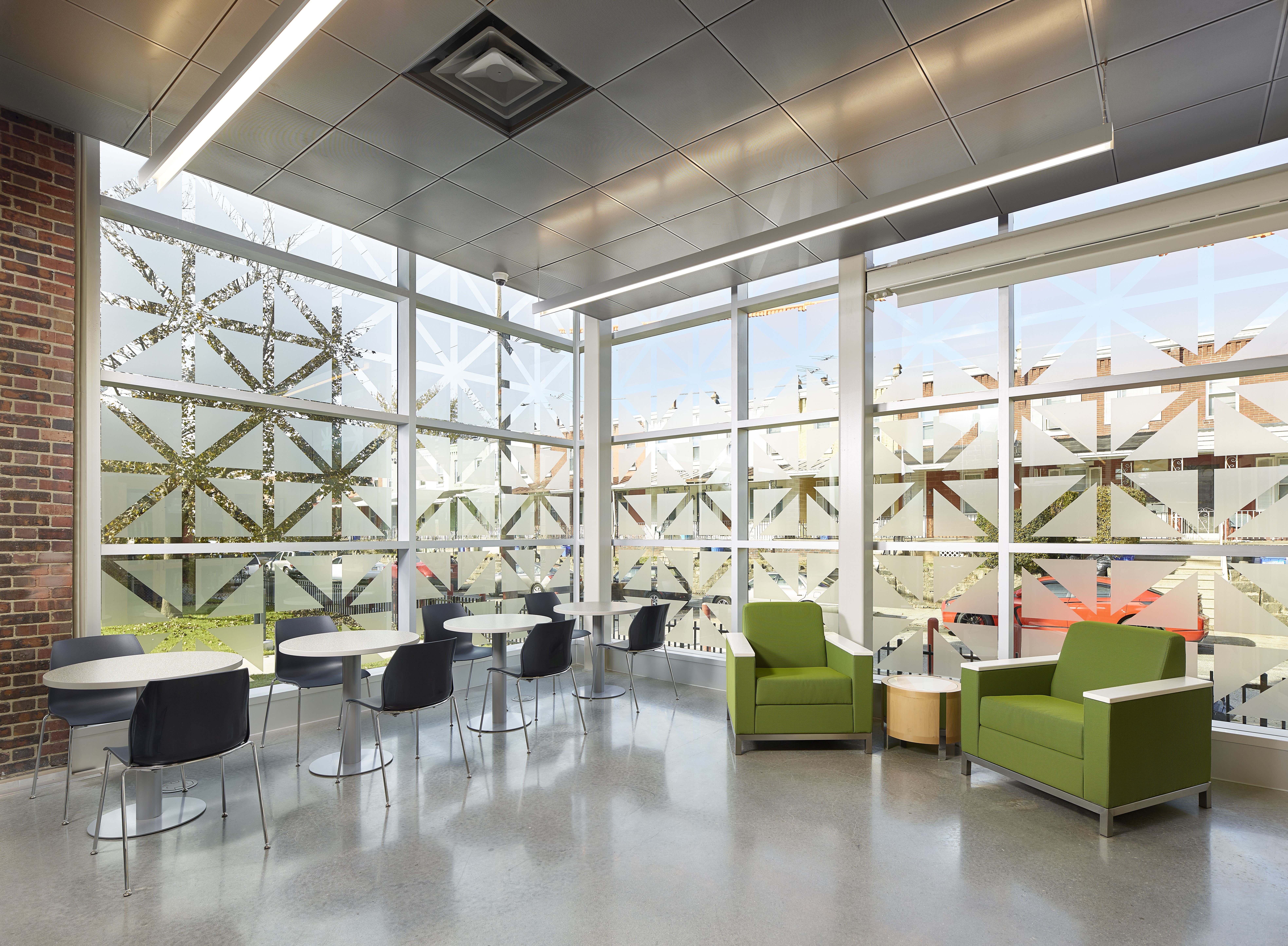Tacony’s new library spurs hopes of a neighborhood reborn

Over the last few years, there have been signs of a turnaround in the Lower Northeast neighborhood of Tacony. With the help of a city grant, there are more than 30 refurbished storefront facades supporting a renaissance of commercial activity along Torresdale Avenue. An upper crust bakery moved in. Something called a “sex-positive community center” is open and making use of a historic building , as PlanPhilly first reported.
What’s acutely exciting about Tacony is the lack of displacement that’s occurred amidst these changes. Tacony was celebrated by Inquirer architecture critic Inga Saffron earlier this year for being one of Philadelphia’s “middle neighborhoods,”, meaning “it remains an intact, working-class neighborhood where you can buy a decent house for under $100,000 and walk to schools, shops, and transit.”
For all the excitement it’s already attracted, the neighborhood’s latest improvements might be the most important of all for that momentum to continue. Coming on the heels of a concerted effort — by neighbors, politicians, and the local CDC — to improve private interests in Tacony, there’s now a newfound effort being made to channel that energy into its civic assets as well. The list of 61 proposed sites for Rebuild, Mayor Jim Kenney’s $500 project, included two — Disston Recreation Center and Vogt Recreation Center — within Tacony. Last weekend, a buoyant crowd of more than a hundred people gathered outside to watch the ribbon-cutting on a new library.
After a 14-month closure for renovations, Tacony Library revealed a new look — complete with a glass addition — that beckons a bright future, which didn’t stop Councilman Bobby Henon from reaching into the past to commemorate the significance.
“This is one of the most robust programming spaces that we can see in Northeast Philadelphia,” Henon said, celebrating the library’s new look. “This is really the essence and model that Henry Disston [thought about] when he created Tacony. It was progressive then and it’s sustainable now.”
It was Disston’s hand-saw manufacturing empire, which began beating metal before the Civil War, that ushered in the first chapter of Tacony’s modern history in Philadelphia. The neighborhood library, built 111 years ago, was one of several built with money from Pittsburgh steel magnate Andrew Carnegie.
Last weekend, Tacony became the third of four neighborhood libraries to come online after receiving major investment from the William Penn Foundation — as part of its $25 million grant Building Inspiration: 21st Century Libraries Initiative — and other donors. Like the other sites, including including Logan Library in North Philadelphia, Tacony will be a space that is 100 percent accessible according to the federal Americans with Disabilities Act.
It will also feature unique design elements, such as low-slung furniture and a “customer service desk” (in lieu of circulation), that aim to transform the staff-to-patron relationship. In essence, these 21st Century facilities are expanding the bounds of what a public library can be — and should be — in this city’s neighborhoods.
A propelling force behind the citywide reimagining of libraries has been the city’s nonprofit and foundation sector.
“The role of the libraries has really changed,” said Shawn McCaney, executive director of William Penn. Today people don’t just come here for books Caregivers come to libraries for story time, young people are taking advantage of after-school programs, and young adults are getting help writing resumes.” … Our libraries are truly community hubs.”
One of the elements that makes Tacony special is its “small business resource center,” which will be run by the Tacony Community Development Corporation. (The organization is also relocating its offices into the library.) That resource center will provide information on services like Pennsylvania CareerLink, along with serving as a connector between hyperlocal employers and employees.
Unlike the other two Carnegie libraries that are part of the 21st Century Libraries initiative — Logan and Lillian Marrero — Tacony is not listed on the local register of historic places (although it is on the National Register). But architect James Keller says that Tacony, perhaps more than any other 21st Century library, pays tribute to the library’s historic fabric.
“It is the only library of the four where we had really good documentation of what had been there,” says Keller. In addition to restoring natural overhead light in the space, “we were able to basically have light fixtures fabricated that were modeled on historic features, but with LED technology,” says Keller.
Even the historic touches in the design were outcomes of a community engagement process that invited residents and organizations of Tacony to collaborate with Keller. “The community was very interested in the preservation aspects of the building,” he says. From the color of the brick to the roman lattice design on the glazing of the exterior, input from stakeholders proved essential.
The essential role that community input played in the year-and-a-half-long process makes Tacony not only for what a library can look like, but how it can get there. Tacony, according to Siobhan Reardon, director of the Free Library of Philadelphia, has been “reimagined and reshaped into meeting the challenging needs and changing needs of today’s customers.” And that, Riordan said, exemplifies “what libraries can and should be in the 21st Century.”
Dear reader, please help protect PlanPhilly’s independent, unbiased existence. We depend on your support to continue providing the local public interest news that you value next year. This giving season, please make a tax-deductible donation during our once-a-year membership drive. Thank you for eleven great years of watchdog coverage and counting!
WHYY is your source for fact-based, in-depth journalism and information. As a nonprofit organization, we rely on financial support from readers like you. Please give today.






